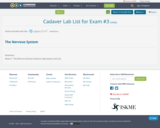
Exam 3 - The Nervous System Cadavers Specimens Lab List.
- Subject:
- Anatomy/Physiology
- Life Science
- Material Type:
- Homework/Assignment
- Date Added:
- 10/19/2019

Exam 3 - The Nervous System Cadavers Specimens Lab List.

Successful Pharmacology course completion requires students to mentally overlay complex mechanisms of drug action onto intricate body physiology to make sense of how drugs both correct and cause disease. Unfortunately, many students (undergraduate – health professional) lack the needed study/critical thinking skills required to navigate this complex curriculum. Providing students with lecture content and study guides is only a partial solution as they often fail, alone, to adequately convey the thought structure required for student success. Therefore, this series of application/critical thinking worksheets was developed to demystify, model, and guide students through the critical thinking processes that need to be employed when engaging the Pharmacology curriculum.

The study guide welcomes students to the adventure of higher education. Dr. CB uses a conversational tone to relate personal experiences as both a student and a professor. She emphasizes the importance of embracing the journey, focusing on personal growth, and recognizing that everyone's path is unique. The book encourages students to believe in themselves and seek support when needed. It also gives practical tips and strategies for a variety of topics, such as time management, study techniques, and mental health care.

This free study guide is designed to supplement your current textbook. This Algebra Study Guide is a solutions oriented approach to Algebra. When solving problems students are asked to communicate their thought process by showing steps wherever possible.
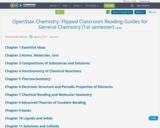
Here you can find reading guides that were created by Montgomery College faculty for undergraduate general chemistry students to use to guide their reading of OpenStax Chemistry. These guides are closely aligned with chapters 1-11 and were designed for use in the first semester sequence of general chemistry. They can be used in a flipped-style classroom where students complete them before the lecture. Or they can be used to reinforce important topics learned in class. Each study guide has fill-in-the blank style questions, as well as links to videos where similar problems are worked through. Finally, suggested practice problems relevant to the topic of each study guide are listed at the end.
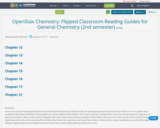
Here you can find reading guides that were created by Montgomery College faculty for undergraduate general chemistry students to use to guide their reading of OpenStax Chemistry. These guides are closely aligned with chapters 12-17 and 21 and were designed for use in the second semester sequence of general chemistry. They can be used in a flipped-style classroom where students complete them before the lecture. Or they can be used to reinforce important topics learned in class. Each study guide has fill-in-the blank style questions, and many have links to videos where similar problems are worked through. Finally, suggested practice problems relevant to the topic of each study guide are listed at the end.

These is a Free Resource containing Polar Side Chains of chemicals that appear on the MCAT Exam.
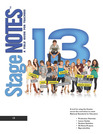
This StageNotes® education guide includes lessons in History, Langauge Arts, Life Skills, Behavioral Studies, and the Arts to be used in conjunction with an exploration of the Broadway musical, 13.

This StageNotes® education guide includes lessons in History, Langauge Arts, Life Skills, Behavioral Studies, and the Arts to be used in conjunction with an exploration of the Broadway musical, Cats.
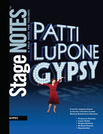
This StageNotes® education guide includes lessons in History, Langauge Arts, Life Skills, Behavioral Studies, and the Arts to be used in conjunction with an exploration of the Broadway musical, Gypsy.
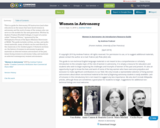
Please note: An updated, expanded version of this guide for 2022 is available at: http://bit.ly/womenastronomers
This is a guide for Astronomy 101 instructors (and other educators) on the issues that have faced women in astronomy and the work of some of the women who can serve as role models for the next generation. Written by Andrew Fraknoi (Foothill College), it is part of a series called “Unheard Voices,” sponsored by the Heliophysics Forum of the Space Missions Directorate at NASA. The guide includes written, on-line, and audio-visual materials, many of which can be used directly in the classroom or for student papers. It features sections on: the history of women in astronomy in general, materials on selected women astronomers of the past, issues facing women in astronomy today, and materials on selected contemporary women astronomers.